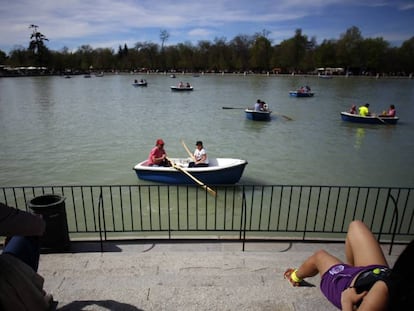Ten Spanish cities that will make you fall in love with archaeology
From Roman ruins to Visigothic remains, Spain is home to numerous sites that tell the fascinating stories of the cultures that came before us
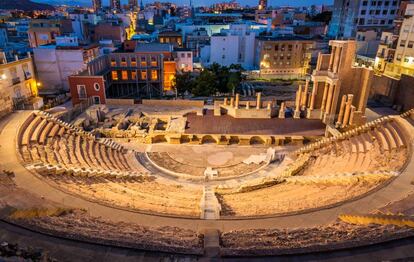
Cities are living beings that have witnessed the passing of hundreds or even thousands of years. Over time, their stories have become hidden under layers of concrete and pavement. But archaeologists know how to spot the clues, read them, and explain what these remains could have meant in their time, before they were covered over.
Here are 10 Spanish cities that are home to archaeological remains that have conserved the essence of what the Spanish once were and who they are today.
1. Ispal / Hispalis / Isbiliya (Seville)
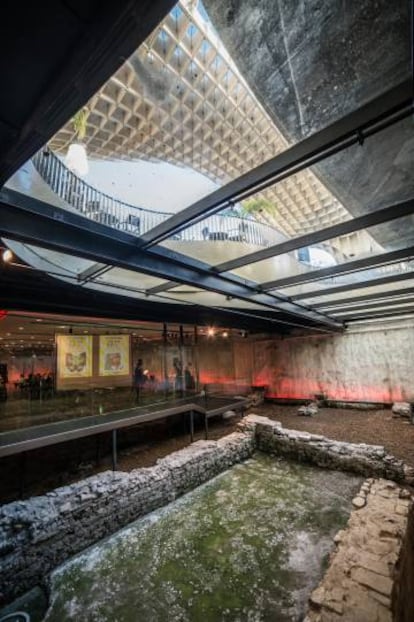
Legend goes that the city of Seville was founded by the Phoenician god Melqart, who was later identified as Heracles by the Greeks. Excavations at the Alc¨¢zar (royal palace) of Seville have revealed remains that date back to the 8th century BC. Seville, known in ancient times as Ispal or Spal, was influenced by the Turdetani, Tartessos, Phoenician and Carthaginian people, until it was conquered by the Romans in 206 BC, and renamed Hispalis. Most of the remains date back to the Roman era, but some come from the later populations who occupied the city. In Encarnaci¨®n square, visitors can see remains of a 12th-century home from the Almohad era at the Antiquarium museum.
2. Tarraco (Tarragona)
In 218 BC, during the Second Punic War, the Roman general Gnaeus Cornelius Scipio arrived in an Iberian settlement and established a garrison that was the beginning of Tarraco. The Roman emperor Augustus lived in Tarraco for two years while leading wars against the Cantabrian and Astures people in the northwest of the peninsula. During the 1st and 2nd centuries AD, buildings such as the temple of Augustus were erected. The city has conserved stunning remains from the Roman era, like the amphitheater, circus (which later held a Visigothic basilica and medieval church), city walls from the 2nd century BC, the Torre dels Escipions funerary tower, and the early Christian cemetery of Francol¨ª.
3. Toletum / Tulaytula (Toledo)
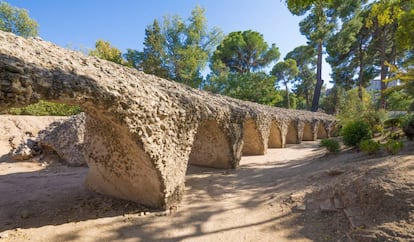
The ancient Carpetania settlement was conquered by Roman legions in 192 BC. Among the remains that can still be found at the city are the Roman circus, thermal baths, and part of a water storage system. Archaeologists have found traces from the Carpetania and Roman periods beneath the cathedral, as well as a mosque from the 11th century. Further outside the city, there are ruins of the Visigothic capital built by King Liuvigild, but a project for opening them to visitors seems frozen in time.
4. Valentia / Balansia (Valencia)
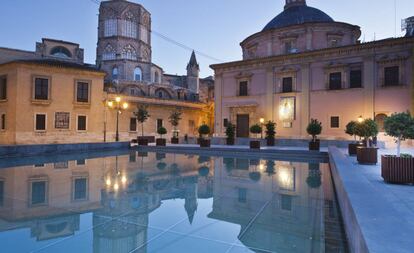
Valencia was founded by the Roman consul Decimus Junius Brutus Callaicus for the soldiers who had fought in the Lusitanian wars. It was destroyed in the Sertorian wars by Roman leader Pompey (75 BC) and rebuilt between 20-15 BC. The city reached its highest point of splendor during the Flavian and Antonine dynasties. Most of the Roman ruins are located under Almoina square, where a nymphaeum, basilica and 5th-century tombs can be seen.
5. Baetulo (Badalona)
The Roman city of Baetulo was founded around 100 BC on a hill known as Tur¨® d¡¯en Seriol and quickly prospered thanks to vineyards and wine exports. A number of remains from the Roman period have been preserved, including the Roman house known as Casa de los Delfines (or, dolphin house), the Garden of Licino the Fifth and a subterranean aqueduct. In Badalona Museum, visitors can see the remains of thermal baths, part of a road and several tabernae or stores.
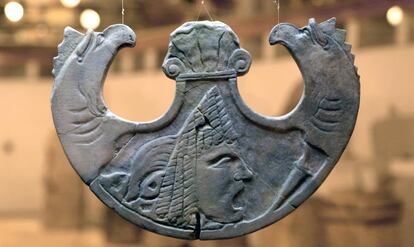
6. Lucus Augusti (Lugo)
The city of Lucus Augusti was founded after the Cantabrian wars (25-19 BC), and its importance rested on its proximity to gold mines. At the end of the third century AD, political instability and the arrival of Barbarian tribes led to the construction of a defensive wall, which can still be seen today. The wall has 71 of the 85 original towers, and 10 doors, five old and five new.
7. Augusta Emerita (M¨¦rida)
Two legions of veteran Roman soldiers settled in modern-day M¨¦rida, in the ford between the Guadiana and Albarregas rivers. The city later became the capital of the ancient Roman province Lusitania, the archbishop¡¯s headquarters and the capital of one of the provinces in the Visigothic kingdom. M¨¦rida is still home to a great number of Roman ruins, including Trajan¡¯s Arch and temple to Diana.
8. Complutum / Al-qal¡¯a Nahar (Alcal¨¢ de Henares)
Founded in the 1st century BC next to the Henares river, Complutum has conserved a portico, civil basilica, marketplaces and baths in its forum. The House of Griffins museum has an excellent collection of mural paintings, which were paradoxically conserved thanks to a fire. When the Moors arrived in 711 AD, they moved the city to the left bank of the river and called it Al-qal¡¯a Nahar.
9. Salduie / Caesaraugusta /Saraqusta (Zaragoza)
Founded by Roman emperor Augustus in 14 BC over the former Salduie, this site was settled by retired Roman infantrymen from various regions and reached its peak between the 1st and 2nd centuries AD. The Museo del Foro exhibits the inside of a Roman sewer, remains of a marketplace and the recently restored mosaic of the Muses. Another interesting thing to see is what¡¯s left of the river port that once thrived on the Ebro. The theater was sacked during the 3rd and its stones used to build the city walls, still visible at the convent of the Holy Sepulchre and next to the Torre¨®n de la Zuda
10. Qart Hadast / Cartago Nova / Qartayanna (Cartagena)
Ever since its foundation in 227 BC by the Carthaginian general Hasdrubal, the city and its desirable natural port have been changing hands constantly. In 209 BC it was conquered by the legions of Scipio Africanus; around 425 AD it was sacked by the Vandals; after the fall of the Roman Empire in 476 it came under Visigothic rule; in 555 it was taken by troops from Byzantium and became the capital of the province of Spania; it was recaptured by the Visigoths in the early 7th century and later conquered by the Muslims. No wonder it¡¯s known as the Port of Cultures. Spots to visit include the Punic walls, the Roman theater, the impressive Augusteum, the archeology park of El Molinete, and the recently uncovered Roman port in Casa Llagostera.
English version by Melissa Kitson.
Tu suscripci¨®n se est¨¢ usando en otro dispositivo
?Quieres a?adir otro usuario a tu suscripci¨®n?
Si contin¨²as leyendo en este dispositivo, no se podr¨¢ leer en el otro.
FlechaTu suscripci¨®n se est¨¢ usando en otro dispositivo y solo puedes acceder a EL PA?S desde un dispositivo a la vez.
Si quieres compartir tu cuenta, cambia tu suscripci¨®n a la modalidad Premium, as¨ª podr¨¢s a?adir otro usuario. Cada uno acceder¨¢ con su propia cuenta de email, lo que os permitir¨¢ personalizar vuestra experiencia en EL PA?S.
?Tienes una suscripci¨®n de empresa? Accede aqu¨ª para contratar m¨¢s cuentas.
En el caso de no saber qui¨¦n est¨¢ usando tu cuenta, te recomendamos cambiar tu contrase?a aqu¨ª.
Si decides continuar compartiendo tu cuenta, este mensaje se mostrar¨¢ en tu dispositivo y en el de la otra persona que est¨¢ usando tu cuenta de forma indefinida, afectando a tu experiencia de lectura. Puedes consultar aqu¨ª los t¨¦rminos y condiciones de la suscripci¨®n digital.
